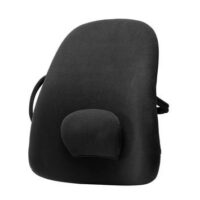Gym Back Exercises

Article by Matthew Hewitt

Gym Back Exercises
A Physiotherapist’s Guide
Introduction
As physiotherapists, we often encounter patients seeking relief from back pain. A common question is about the effectiveness of gym back exercises. This comprehensive guide, infused with the latest research and physiotherapy insights, aims to educate you on various back exercises. Remember, while these exercises are beneficial, they may increase your back pain if your underlying control is inadequate. Always consult a physiotherapist to determine the appropriate exercises for your condition.
Understanding Back Pain and Exercise
Back pain can stem from various issues, including muscle imbalances, poor posture, or underlying health conditions. Exercise, particularly those that strengthen the back, improve posture, and increase flexibility, can be effective in managing and preventing back pain.
The Importance of Core Engagement
A strong core is crucial for back health. It includes not just the abdominal muscles but also the multifidus, latissimus dorsi, erector spinae, pelvic floor, and diaphragm. Core strengthening exercises play a vital role in stabilising the spine and reducing back pain.
Exercise Breakdown
Disclaimer
Please consult your physiotherapist before starting any new exercise program, especially if you have a history of back pain. The exercises described here may not be suitable for everyone and could exacerbate existing conditions if performed incorrectly.

1. Deadlifts
- Target: Posterior chain (multifidus, erector spinae, latissimus dorsi, lower traps, glutes, hamstrings)
- Form Tips: Keep shoulders back and down, hips and ankles mobile, and knees stable.
2. Rows
- Target: Inferior and mid trapezius, rhomboids, latissimus dorsi, teres major
- Form Tips: Engage back muscles before arm movement, maintain shoulder control.
3. Lat Pulldowns
- Target: Latissimus dorsi, lower traps, teres major
- Form Tips: Stabilize shoulder by pulling scapula back and down.
4. Shrugs
- Target: Upper back (trapezius muscles)
- Form Tips: Activate rhomboids and mid-traps, maintain arm angle.
5. Farmer’s Carry (or Odd Carry)
- Target: Core muscles (multifidi, latissimus dorsi, traps, abdominals, pelvic floor)
- Form Tips: Keep shoulders back and down, start with lighter weights.
Bonus Exercises
- Squats: Engage back muscles for good posture under load.
- Bird-Dog: Focus on core control and back form.
- Planks: Excellent for back strengthening through core stabilization.
Grading Exercises: From Beginner to Advanced
Beginner Level:
- Basic planks, cat-cow stretches, and bird-dog for core engagement and flexibility.
Intermediate Level:
- Light deadlifts, seated cable rows, and wall squats for enhanced back and core strength.
Advanced Level:
- Standard deadlifts, pull-ups, and weighted farmer’s carry for comprehensive back strengthening.
The exercises described above are just a sample of what may assist the general population. Some people may risk increasing injury or increasing their pain if they have inadequate strength or technique control. we highly recommend that you seek the professional advice of your physiotherapist who will customise your exercise
Mobility and Flexibility Exercises
Including spinal twists, child’s pose, and hamstring stretches in your routine can significantly improve back flexibility and mobility, which are essential for back health.
Recent Research Insights
Recent studies emphasise the importance of functional back exercises in managing and preventing back pain. Functional exercises mimic everyday movements, helping to strengthen the back in a more holistic way. This approach aligns with the latest physiotherapy practices focusing on whole-body wellness.
Conclusion
Incorporating these gym-based back exercises into your routine can significantly improve your back health. However, it’s essential to perform these exercises with the correct form and intensity suited to your fitness level.
What to Do Next?
If you’re experiencing back pain or unsure about starting a new exercise regimen, consult a physiotherapist. They can assess your condition and recommend a tailored exercise plan. For more information, visit PhysioWorks for professional advice and resources.
For more information and resources, visit PhysioWorks Back Pain Resources an excellent source for understanding and managing back pain through physiotherapy.













































































